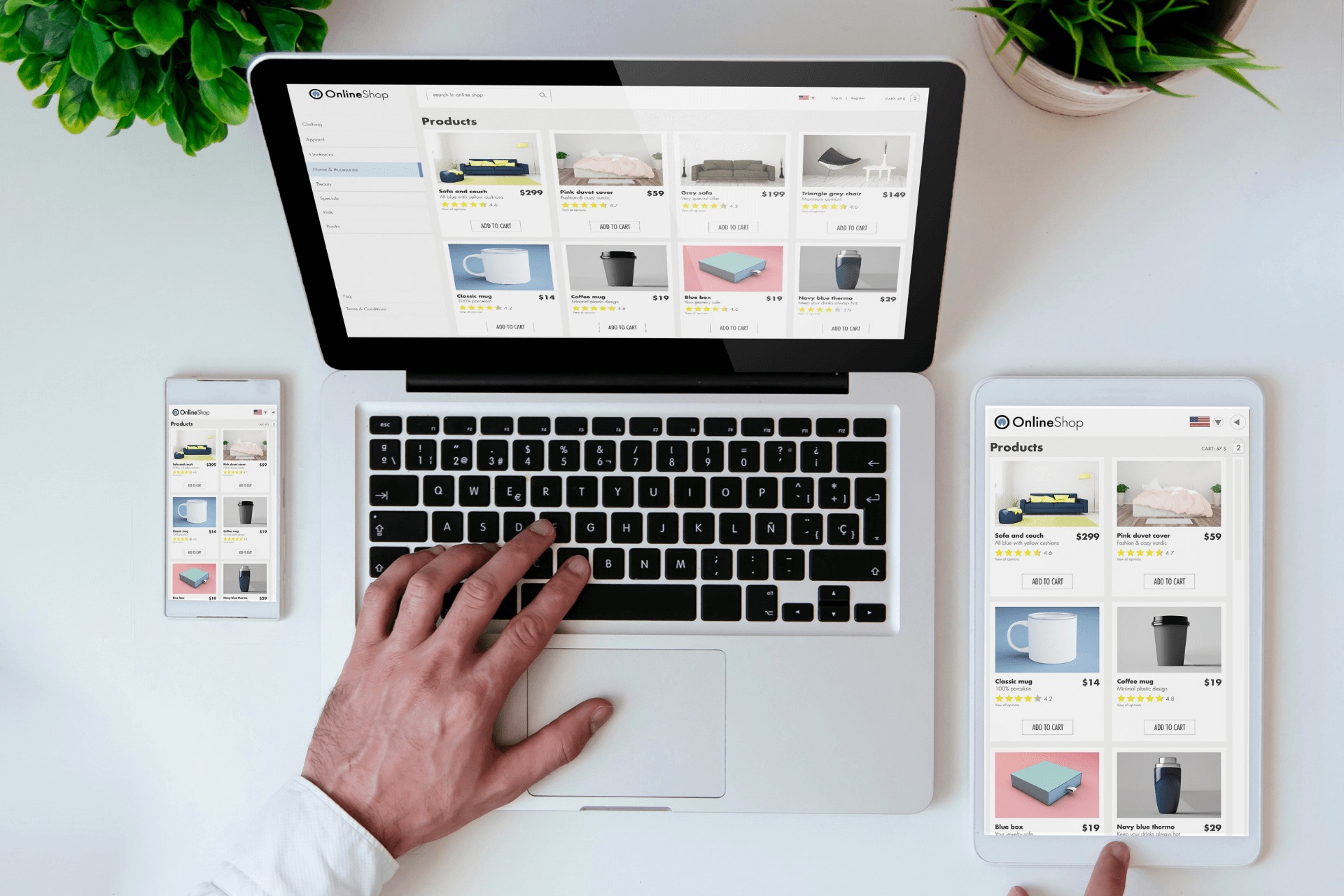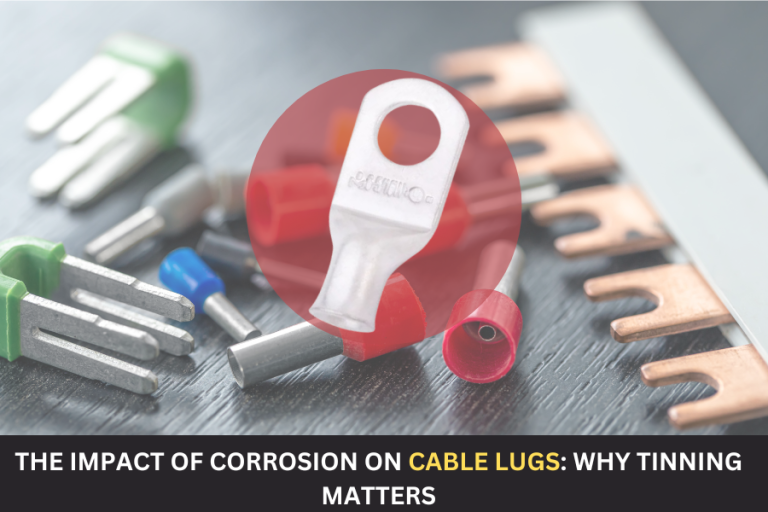
For your e-commerce business to thrive in today’s digital landscape, having a robust online presence is paramount. Your website, essentially serving as your online storefront, wields a significant impact on your income and consumer loyalty. Ensuring that your e-commerce site is both aesthetically beautiful and user-friendly requires choosing a credible web design firm, preferably an experienced ecommerce website design agency. In this article, we’ll delve into the crucial considerations to make when selecting the best web design firm for your online store.
Typically, potential clients will contact your business through your e-commerce website.Making an influence online is more important than merely existing there. You need a web design company that is knowledgeable about your industry’s trends as well as the demands of your specific organization in order to do this.
Understanding Your Needs for E-Commerce
You must first comprehend your e-commerce needs before beginning your search for the greatest web design firm. What are the objectives of your business? What services and goods do you provide? Do you have a favorite design element or feature in particular for your website’s layout? You can interact with potential design partners more successfully if you have a clear vision.
1. Analysis of the target audience
One of the essential elements of determining your e-commerce requirements is understanding your target demographic. Who would make the ideal customers for you? What are their characteristics, hobbies, and internet activities? Detailed market research should be done before developing consumer personas. You can adapt your website design to the tastes and expectations of your potential clients with the aid of these personas.
2. Market Conditions
You need to be aware of your competitors if you want to stand out in the crowded e-commerce market. Look up the websites of your rivals. What characteristics or design elements do they employ to draw clients? Which possibilities or gaps can you find that will provide you a competitive advantage? This information will direct your conversations with web design firms and assist you in articulating your unique selling propositions.
3. User Experience (UX) Considerations
E-commerce places a high priority on user experience. Conversion rates may be strongly impacted by your website’s usability, load speeds, and navigation. Think about how you want your website’s visitors to navigate. Do you want to improve any particular user flows, like the checkout procedure? The web design business will be able to create a user-friendly interface with your help in clearly articulating your UX goals.
4. Scalability and Prospective Growth
Go beyond what you need right now. Your website’s requirements will increase as your e-commerce firm expands. Talk to possible design partners about your scalability requirements. Incorporate new services like a blog or discussion board, expand into new areas, or increase the number of products in your lineup? The capacity of your website to adapt to future developments is essential to its long-term success.
5. Brand messaging and identity
An extension of your brand is your website. Think about the identity, values, and messaging of your brand. What impression do you want visitors to have of your brand? Your website should successfully explain your value proposition and be in line with your brand’s visual identity.
6. Content Management
In order to engage and inform your customers, content is crucial. Your content strategy should be discussed with the site design firm. Are you going to write a blog, write about your products, make videos, or produce any other kind of content? Effective content integration can improve your website’s look and authority online.
7. Payment and Security Processing
Websites for e-commerce deal with sensitive client data and financial transactions. Security cannot be negotiated. A significant focus on security measures, such as SSL certificates, safe payment gateways, and data encryption, should be a priority for your web design company.
8. Analysis and Monitoring
You need powerful analytics and tracking tools to evaluate the performance of your e-commerce website. Talk to possible design partners about your analytics needs. Do you wish to track any particular key performance indicators (KPIs), such as conversion rates, bounce rates, or consumer behavior? You can make data-driven decisions to enhance the performance of your website with the aid of proper tracking.
Looking into Potential Web Design Organizations
Making a list of potential web design businesses is a good place to start your search. This can be done through web searches, suggestions from coworkers, or business directories. Make sure the businesses you are considering have expertise in designing e-commerce websites.
Portfolio Assessment
The portfolio of a web design company provides a glimpse into their expertise. Look for illustrations of their prior e-commerce endeavors. Pay close attention to how well-designed, user-friendly, and functional their websites are. A robust portfolio serves as a reliable gauge of their abilities and originality.
Planning Your Website’s Budget
Setting a budget for your website project is crucial, even if quality should be a top concern. The web design firms on your list should provide you with quotes so you may compare them. Remember that making an investment in a well-designed e-commerce website is a long-term plan for company expansion.
Collaborative Methodology
It is essential that you and the web design firm work together effectively. They must be open to hearing your suggestions and offering professional advice. Your website will be in line with your vision and goals if you take a collaborative approach.
Reviews and testimonials from clients
Examine reviews left by former customers of the web design firms you are considering. Online reviews and testimonies can offer insightful information about a company’s reputation, dependability, and level of client satisfaction.
Mobile Flexibility
Your e-commerce website must be responsive on a variety of devices in today’s mobile-driven environment. Check to see if the web design firm promotes mobile compatibility and provides a seamless user experience on smartphones and tablets.
SEO-Friendly Design
For visibility and organic traffic, search engine optimization is crucial for e-commerce websites. Pick a web design firm that is knowledgeable about SEO principles and has experience putting them into practice.
The Importance of SEO for E-Commerce
Increased Visibility: When customers search for relevant keywords, SEO makes your website stand out in search engine results pages (SERPs). Your website will be more visible to potential clients the higher it ranks.
Organic Traffic: SEO-driven organic traffic is economical and enduring. A vital source of customers who are actively looking for your goods or services, it attracts visitors.
Credibility and Trust: Users frequently view websites that do well in search results as more credible and trustworthy. Higher conversion rates may result from this trust.
Competitive Advantage: SEO can provide you an advantage in the cutthroat world of e-commerce. Gaining a higher proportion of the market by outranking rivals for important terms.
Features of E-Commerce
Consider the specific e-commerce features you need, like payment gateways, shopping carts, and inventory management. Talk about them with the web design company to ensure that they can properly include these criteria.
1. Shopping Cart System
A reliable and user-friendly shopping cart system is necessary for every e-commerce website to run smoothly. Customers may effortlessly review their selections, add goods to their shopping carts, and complete the checkout procedure. Check to see if the web design company can incorporate a shopping cart with features like wish lists, real-time cart updates, and save for later. It should also be able to manage your product catalog, multiple product categories (physical, digital, etc.), and your numerous product types.
2. Payout Gateways
For e-commerce, having the ability to securely accept online payments is a requirement. Which payment channels you want to integrate should be discussed with your web design company. Credit card processors, digital wallets, PayPal, Stripe, and other popular choices are available. For your consumers’ hassle-free checkout experience, the integration should be smooth.
3. Inventory Control
In order to avoid overselling, control stock levels, and monitor product availability, effective inventory management is essential. The inventory management system on your e-commerce website should be feature-rich and enable you to update stock levels, create alerts for low inventory, and automate changes to product status, such as “out of stock” or “back in stock” announcements.
4. Product Search and Filters
Give customers powerful filtering options and a powerful search function to help them find the things they’re looking for quickly. You should be able to use filters on your website based on categories, pricing ranges, sizes, colors, and other pertinent characteristics. The user experience can be further improved by a sophisticated search engine that includes features like auto-suggestions, spelling checks, and synonyms.
5. Product Evaluations and Scores
Reviews and ratings by customers help other consumers make more informed decisions and establish trust. Make sure your website has a section where users can rate and review products. To properly handle reviews, the web design business should also think about adding a moderation system.
6. Secure Checkout
In e-commerce, security is crucial. A secure checkout method must be offered on your website. This includes safe payment processing, encryption using SSL certificates, and adherence to industry standards like PCI DSS (Payment Card Industry Data Security Standard). To safeguard consumer data and your brand’s reputation, talk security measures over with your web design business.
7. User Profiles and Accounts
Create accounts for customers so they can access past orders and streamline future purchases. Address books, order tracking, and the capacity to manage personal information should all be included in user accounts. Features that promote personalization can also increase user engagement.
8. Delivery & Shipping Options
To accommodate client preferences, include a range of shipping and delivery alternatives. Give customers a range of options, including in-store pickup, express delivery, and standard shipping. To keep clients updated on deliveries, offer real-time shipping rate estimations and order tracking.
9. Calculating taxes
Based on consumer location and applicable tax legislation, your e-commerce platform should be able to automatically calculate and apply taxes. Discuss the web design firm’s strategy for handling proper tax calculations.
10. Exchanges and Credits
Consider putting in place an easy-to-use returns and refunds mechanism. Provide clients with a simple mechanism for initiating returns and monitoring the status of refunds, as well as a clear explanation of your return policy.
11. Reporting and Analytics
Implement analytics and reporting tools to make wise judgments and optimize your online store. Monitor key performance indicators (KPIs) like revenue, conversion rates, and consumer behavior. With the web design firm, go over how analytics will be incorporated into your website.
System for Managing Content
Regular website content updates require a user-friendly content management system (CMS). Make sure the web design firm uses a CMS that complements the skills of your team.
Services and Maintenance
Websites need constant upkeep and care. To keep your website operating efficiently, find out what post-launch services and maintenance plans the web design business offers.
Deadlines and Schedules
Set precise timetables and deadlines for the development of your website. To make sure it complies with your business goals, talk with the web design company about the anticipated delivery date.
Legal Contracts
Make sure that any legal agreements, such as contracts and intellectual property rights, are precisely specified and recorded before making your decision.
Conclusion
After thoroughly considering all the aforementioned factors, make your final decision with careful deliberation. Choose a web design company, ideally an ecommerce website design London specialist, that aligns most closely with the goals and requirements of your online business. Always keep in mind that your website represents an investment in the online success of your brand.
FAQs
1.What should my budget be for launching an online business?
Your e-commerce website design budget may vary significantly depending on your specific needs and the price of the web design company. To establish a reasonable budget, it is wise to acquire estimates from several businesses.
2. What role does mobile responsiveness play in the design of e-commerce websites?
Because a substantial part of online buyers utilize smartphones and tablets, mobile responsiveness is essential. A website that is mobile-friendly provides users with a streamlined and user-friendly experience, potentially increasing income.
3. How can I make sure that the search results for my online store are prominent?
Use a web design company that is familiar with SEO tactics to raise the ranking of your website in search results. Additionally, adopt efficient SEO tactics, optimize your product listings, and frequently update your material.
4. What e-commerce features are necessary for an online store to succeed?
A safe and user-friendly shopping cart, a variety of payment methods, product reviews, and inventory management are all crucial components of e-commerce. Features should be chosen in accordance with your company’s objectives and consumer preferences.
5. Do web design firms provide continuing support and upkeep?
To keep your website current and safe, several web design firms offer support and maintenance subscriptions. Before concluding your collaboration, it is imperative to go over these services and their prices.





